Online communication channels empower users to connect, learn, generate web content, and supercharge their engagement with digital marketing trends, supercharging their digital marketing endeavors. With billions of people actively using social media globally, virtually everyone has been touched by the reach of these communication platforms in some way. Whether you prefer to observe or actively engage quietly, social media has transcended the status of a mere trend or an optional extra; it can be considered an absolute necessity.
Amidst the diverse array of platforms like TikTok, Instagram, Snapchat, Pinterest, Reddit, and LinkedIn, you're bound to find a digital space that perfectly aligns with and fulfills your needs.
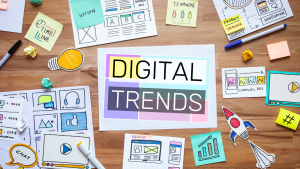
However, for business owners, a unique set of challenges emerges. Staying updated with these trends is crucial for businesses to remain competitive and relevant in the dynamic marketing world.
- Youth-Centered Marketing
- The Rise of Influencers as Powerful Brand Advocates
- Enhanced Customer Interactions Through the Integration of Chatbots
- Audio-First Marketing
- Authentic and Humanized Branded Content
- Sympaphonic Ads
- Realist Influencer Marketing
- Branding and Brand Values
- Consolidation of TikTok and short videos
- Video Marketing
- Google Analytics 4
- Cookies Expiration and Source Data Solutions
- Increased Automation of Marketing Processes
- Phygital (physical-digital) and Augmented Reality Experiences
- Innovative Solutions for User Privacy Support
- YouTube Shorts: More Visible and Monetizable
- SEO and B2B Companies on TikTok
- The Surge of Intelligent and Automated Bidding in Digital Advertising
- Improving and Focusing on Customer Loyalty
Throughout the remainder of 2023 and into 2024, marketers will encounter a host of exciting trends and challenges that will shape how they engage with their target audience.
Why are marketing trends important?
Keeping pace with the ever-changing world of digital marketing ensures your strategies remain relevant and aligned with the latest industry developments. Marketing trends are ever-evolving strategies and approach businesses and marketers adopt to connect with their target audiences effectively.
But why are marketing trends important?
The rapid expansion of the digital realm has ushered in a new era of human interaction that extends to every facet of life. In sectors centered around business, the amalgamation of digital technologies into promotional and marketing endeavors has proven immensely valuable for online commerce and distribution.
Given the undeniable ascendancy of the digital age, marketing strategies reliant on electronic media have become paramount in contemporary business approaches. This is fueled by the constant consumption of electronic content shared and disseminated online.
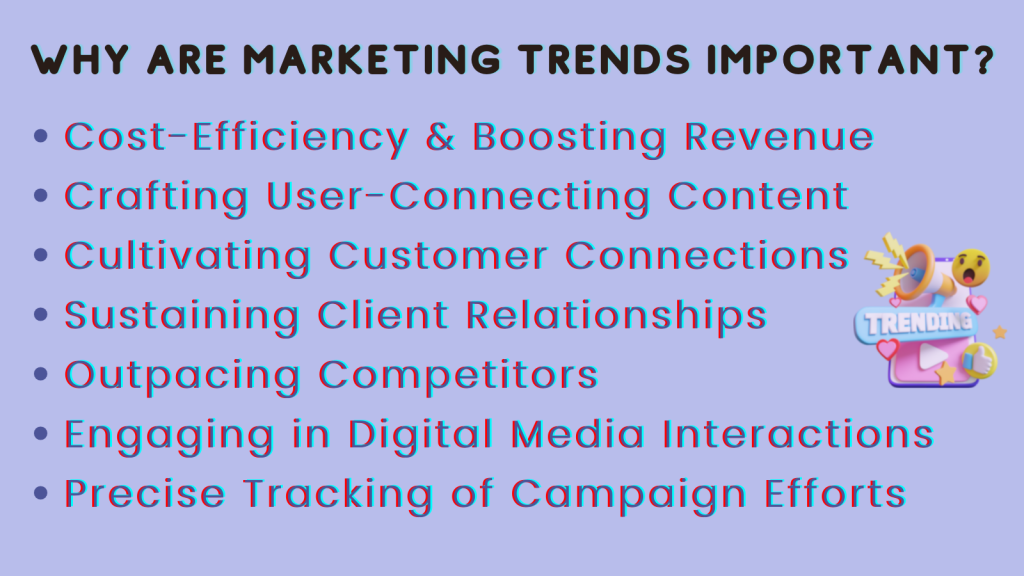
Numerous marketing channels and mediums play a pivotal role in the considerable surge in brand awareness. Digital trends encompassing SEO, online video sharing, pay-per-click advertising, blog promotion, viral marketing strategies, and social media applications (such as Facebook, Snapchat, and Tumblr) are paramount. When incorporated into business strategies, they elevate brand recognition and boost marketing efforts.
Here are some aspects regarding the significance and diversity of digital marketing trends:
- Cost-Efficiency & Boosting Revenue
This highly budget-friendly strategy offers a cost-effective marketing approach suitable for startups and established businesses.
All factors considered, it's reasonable to anticipate revenue growth within a few months or weeks. Maintaining perspective and flexibility is essential to stay on the right trajectory.
- Crafting User-Connecting Content
The ability to tailor your content based on demographic data and incorporate actionable call-to-action buttons represents another distinct advantage of digital marketing. Content optimization rooted in data and demographics is indispensable.
- Cultivating Customer Connections
Establishing communication channels with your customers fosters trust and loyalty toward your brand.
Marketing trends are ever-evolving strategies and approach businesses and marketers adopt to connect with their target audiences effectively.
- Sustaining Client Relationships
Prioritizing client satisfaction through exemplary customer service can work wonders for your business, enhancing your brand's reputation.
- Outpacing Competitors
A meticulously planned and well-designed online brand can propel you ahead of the competition, providing a distinct advantage in your products and services.
- Engaging in Digital Media Interactions
The digital sphere teems with daily online activity, where countless individuals spend substantial time searching for compelling product headlines or articles that resonate with them. This presents an effective method for achieving the brand awareness your company requires.
- Precise Tracking of Campaign Efforts
In contrast to traditional media, digital marketing enables precise campaign performance tracking across numerous channels and mediums—from the initial user engagement to their journey through your website and beyond (with remarketing). This presents a clear advantage over offline media advertising channels.
We’ll unveil the key trends that will continue to guide our digital marketing strategy in 2023 and, most probably, in the following years, starting with 2024.
1. Youth-centered marketing
When it comes to preparing for the future and appealing to the upcoming generation, youth-centered marketing has taken the spotlight, and it's much more than merely sprinkling trendy phrases on a product description.
Align your brand with causes that resonate with your interests and young people's values.
Youth-centered marketing entails directing marketing efforts toward young people, particularly Generation Z, which encompasses tweens, teenagers, and young adults. Despite conventional beliefs about their purchasing power, Gen Z currently wields an impressive $143 billion in spending capacity. They are tech-savvy, spending a significant chunk of their time navigating various digital platforms. Their influence far exceeds what is commonly acknowledged.
How can you engage with Generation Z?
- Diversify Your Social Media Presence
Utilize various social media platforms and strategies to reach Generation Z effectively.
- Champion a Cause
Align your brand with causes that resonate with your interests and young people's values.
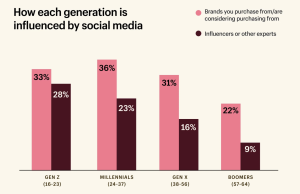
Image source: https://www.shopify.com/blog/influencer-marketing-statistics
- Listen and Engage
Show your audience that you value their opinions by actively listening, respecting feedback, and maintaining interactive communication.
- Leverage Influencer Marketing
Collaborate with trusted social media influencers and showcase authentic reviews to demonstrate the value of your products or services.
- Navigate Humor and Sensitivity
Approach humor and wit carefully, recognizing that Generation Z is socially conscious and vigilant about cancel culture.
These tips can help you connect and engage effectively with Generation Z, a demographic known for its unique preferences and values.
2. The rise of influencers as powerful brand advocates
The ascendancy of influencers as influential brand champions stems from their capacity to authentically engage with a dedicated following, often in specialized niches. Their prowess in content creation, active audience interaction, and the ability to precisely target demographics have made them invaluable allies for brands seeking effective and measurable marketing strategies. However, this rise also presents challenges that brands must navigate, including ensuring alignment with values and maintaining transparency.
3. Enhanced customer interactions through the integration of chatbots
The trend of integrating chatbots is transforming customer interactions by providing swift, personalized, and accessible support. As businesses continue to harness the capabilities of AI-driven chatbots, they are poised to create more efficient, responsive, and satisfying customer experiences.
One of the key benefits of chatbots is their ability to offer personalized interactions. Chatbots can provide tailored product recommendations by analyzing customer data and purchase history, enhancing cross-selling and upselling opportunities.
These intelligent bots are available 24/7, responding instantly to customer inquiries and addressing common issues. They are adept at handling routine tasks such as answering frequently asked questions, processing orders, and assisting with account-related queries. This reduces response times and frees human agents to focus on more complex and nuanced customer issues.
One of the key benefits of chatbots is their ability to offer personalized interactions. Chatbots can provide tailored product recommendations by analyzing customer data and purchase history, enhancing cross-selling and upselling opportunities. They can also remember past interactions, creating a sense of customer continuity and familiarity.
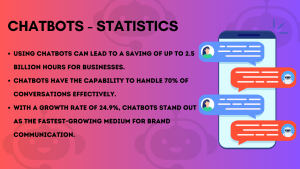
Moreover, chatbots are versatile in their deployment. They can be integrated into various communication channels, including websites, mobile apps, messaging platforms, and social media. This omnichannel presence ensures that customers can engage with businesses on their preferred platform, increasing accessibility and convenience.
As the integration of chatbots becomes more sophisticated, they are also being used for proactive engagement. They can send automated notifications, updates, and reminders, keeping customers informed and engaged throughout their journey.
4. Audio-First Marketing
Audio-first marketing is a marketing strategy that prioritizes the use of audio content and platforms to engage with an audience. It involves creating and distributing content primarily for audio channels and devices, such as podcasts, audio advertisements, voice search optimization, and smart speakers like Amazon Echo and Google Home.
The rise of audio-first marketing is partly due to the increasing popularity of audio consumption and the convenience it offers users. People can listen to content while multitasking, commuting, or during other activities, making it a valuable channel for reaching and engaging with consumers.

Audio-first marketing refers to podcasting, audio advertising, audio content, and audiobooks:
- Podcasting
Creating and promoting podcasts to share valuable content, tell brand stories, and connect with an audience through audio.
- Audio Advertising
Developing and placing audio ads on platforms like streaming services, internet radio, and podcasts to reach a target audience through their ears.
- Audiobooks and Audio Content
Utilizing audiobooks or other audio formats to provide your audience with educational, entertaining, or informative content.
People can listen to content while multitasking, commuting, or during other activities, making it a valuable channel for reaching and engaging with consumers.
It also brings to our attention voice search optimization, voice assistants, and smart speakers:
- Voice Search Optimization
Optimizing digital content for voice search to ensure your brand is discoverable when users use voice queries using voice assistants or smartphones.
- Smart Speakers and Voice Assistants
Creating voice-based applications or skills for smart speakers and voice assistants to engage with users through voice commands and responses.
5. Authentic and Humanized Branded Content
This trend aims to create content that doesn't feel like traditional advertising but rather like a conversation between the brand and its audience. By humanizing their content, brands can build trust, loyalty, and lasting customer relationships in an era where authenticity is highly prized.
6. Sympaphonic Ads
Sympaphonic advertising involves adapting the background audio message to match various music genres and songs. AI Music has introduced a Sympaphonic Ads tool to streamline the production process for different marketing campaigns.
Sympaphonic Ads, a term coined from the combination of 'sympathy' and 'symphonic,' embodies a harmonious blend of emotions and melodies within the realm of advertising. These advertisements transcend the realm of traditional jingles or catchy tunes; their objective is to elicit powerful emotional reactions from the audience by seamlessly weaving music into the brand's message. Sympaphonic Ads leverage the universal language of music to establish a more profound connection with consumers.
Numerous brands have adopted sympaphonic ads to enhance their interaction with their customer base. They recognize that their customers appreciate a more seamless listening experience in digital audio marketing, which contrasts with the abruptness of traditional radio-style ads.
Why Opt for Sympaphonic Advertising?
If you're like many of us in marketing and advertising, you're tasked with generating a substantial amount of content within tight deadlines. Utilizing sympaphonic ads presents a logical solution for several compelling reasons:
- Sympaphonic ads enhance revenue generation.
- Digital audio ads enhance consumer engagement and effectively target your audience.
Sympaphonic Ads, a term coined from the combination of 'sympathy' and 'symphonic,' embodies a harmonious blend of emotions and melodies within the realm of advertising.
- Sympathonic ads lower the production costs associated with audio marketing messages.
- Sympathonic advertising reduces the production timelines for marketing campaigns.
Above all, it's crucial to maintain a satisfied and engaged customer base. This innovative form of digital audio advertising can make a significant impact by tailoring each advertising experience to individual users.
7. Realist Influencer Marketing
Influencer marketing will evolve to embrace more realistic, relatable influencers who reflect their target audience's authentic values and experiences.
Realist Influencer marketing refers to an approach within influencer marketing that prioritizes authenticity, transparency, and genuine connections between influencers and their audiences.
In contrast to traditional influencer marketing, which often focuses solely on promoting products or services, realist influencer marketing places a premium on creating authentic and relatable content.
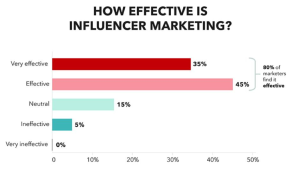
Image source: https://www.smartinsights.com/online-pr/influencer-marketing-effectiveness/
This strategy aims to build consumer trust by showcasing real experiences, stories, and values, fostering a deeper and more genuine connection between influencers and their followers. The emphasis is building long-term, meaningful relationships rather than short-term promotional efforts.
8. Branding and brand values
Branding and brand values are ongoing and fundamental considerations in the world of marketing and business. While they are not new trends, they continue to be relevant and influential in shaping how companies position themselves in the market, connect with their target audience, and differentiate their products or services.
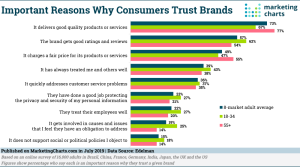
Image source: https://www.marketingcharts.com/
Branding encompasses a company's identity, including its logo, messaging, visual style, and overall reputation.
Brand values are the principles and beliefs that guide a company's actions and decisions, and they play a crucial role in how a customer perceives a brand.
In recent years, there has been a growing emphasis on the importance of authentic and purpose-driven branding. Consumers are increasingly drawn to brands that align with their values and demonstrate social responsibility. This trend has led many companies to highlight their commitment to sustainability, diversity, and ethical practices as part of their brand values.
So, while branding and brand values are not new trends, how they are implemented and the emphasis placed on authenticity and social responsibility are evolving trends within the broader branding concept.
9. Consolidation of TikTok and Short Videos
The consolidation of TikTok and short videos as a digital marketing trend in 2023 highlights the continued growth and influence of short-form video content in the marketing landscape. Several factors drive this trend: short-form video popularity, TikTok's continued dominance, in-app advertising, user-generated content (UGC), cross-platform integration, and engaging younger audiences.
TikTok's continued dominance and the popularity of short-form videos are reshaping digital marketing.
Brands tap into TikTok's diverse user base, leverage user-generated content, use in-app advertising, explore creative storytelling, engage younger audiences, and integrate content across platforms to connect with consumers effectively.
10. Video Marketing
Video marketing is versatile, allowing brands to convey information, entertain, and connect with audiences in various ways. It's a dynamic and ever-evolving field, and staying updated with the latest video trends is crucial for successful digital marketing campaigns. Video marketing thrives in 2023, driven by short-form content's popularity on platforms like TikTok. Live streaming engages audiences, while interactive and personalized videos create connections. SEO optimization, storytelling, and data-driven insights refine strategies. Accessibility and VR/AR enhance inclusivity and experiences.
11. Google Analytics 4
Google Analytics 4 (GA4) is a prominent and transformative digital marketing trend in 2023. It introduces several key features and benefits that empower marketers to gain deeper insights into user behavior and optimize their strategies.
One of the most significant shifts in GA4 is its move from a session-based approach to a user-centric one, providing a more comprehensive view of user interactions across various devices and platforms. Marketers can better understand the entire customer journey, allowing for more effective campaign optimization and user engagement strategies.
GA4 also offers enhanced event-tracking capabilities, granting marketers the flexibility to customize and track specific user interactions and conversions. Whether monitoring scroll behavior, video engagement, or form submissions, GA4 enables businesses to collect and analyze data that aligns with their unique objectives.
Privacy is a growing concern, and GA4 takes a privacy-centric approach. It respects user consent and privacy preferences while still collecting valuable data. This aligns with evolving data protection regulations, ensuring businesses remain compliant and trustworthy.
12. Cookies Expiration and Source Data Solutions
Cookies, small pieces of data that track user behavior online, have long been a cornerstone of targeted advertising. However, changing regulations and growing privacy concerns are reshaping how marketers utilize cookies.
Cookies expiration refers to the practice of setting shorter lifespans for cookies, ensuring that user data doesn't linger indefinitely. This respects user privacy and encourages marketers to rely on more immediate and accurate data sources. Source data solutions involve diversifying data collection methods beyond cookies. Marketers are turning to first-party data, such as user interactions on their websites, and exploring alternative identifiers like email addresses.
This trend signifies a shift towards more transparent, ethical, and privacy-conscious marketing practices. While it presents challenges, it also encourages marketers to forge deeper connections with their audience through relevant and respectful engagement. In this evolving landscape, adaptability and responsible data management are key to staying ahead in the digital marketing game.
13. Increased Automation of Marketing Processes
Automation reshapes digital marketing by simplifying tasks, enhancing personalization, and improving efficiency. It encompasses marketing automation tools, AI-driven analytics, chatbots for customer engagement, programmatic advertising, social media scheduling, and AI-powered content creation.
This allows marketers to work smarter, deliver personalized experiences, and make data-driven decisions, ultimately enhancing their competitiveness in the digital landscape.
14. Phygital (physical-digital) and Augmented Reality Experiences
Blending augmented reality (AR) with phygital experiences represents an innovative trend in digital marketing. This trend seamlessly merges the physical and digital worlds, creating immersive interactions that bridge the gap between online and offline realms.
AR enhances engagement by introducing interactive elements, such as virtual product try-ons, visualizations, and gamified experiences. In the retail sector, it enables customers to preview products in their environment, boosting confidence and reducing uncertainty during shopping.
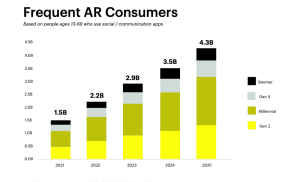
Image source: https://artlabs.ai/blog/augmented-reality-statistics-in-2023
AR brings a new level of engagement to marketing campaigns, capturing audience attention and leaving lasting impressions. It also offers data-driven insights into user interactions and preferences, facilitating personalized marketing strategies.
AR enriches storytelling by overlaying digital content onto physical spaces or objects, creating compelling narratives. Brands adopting AR and phygital experiences set themselves apart in the competitive market, showcasing innovation and customer-centricity.
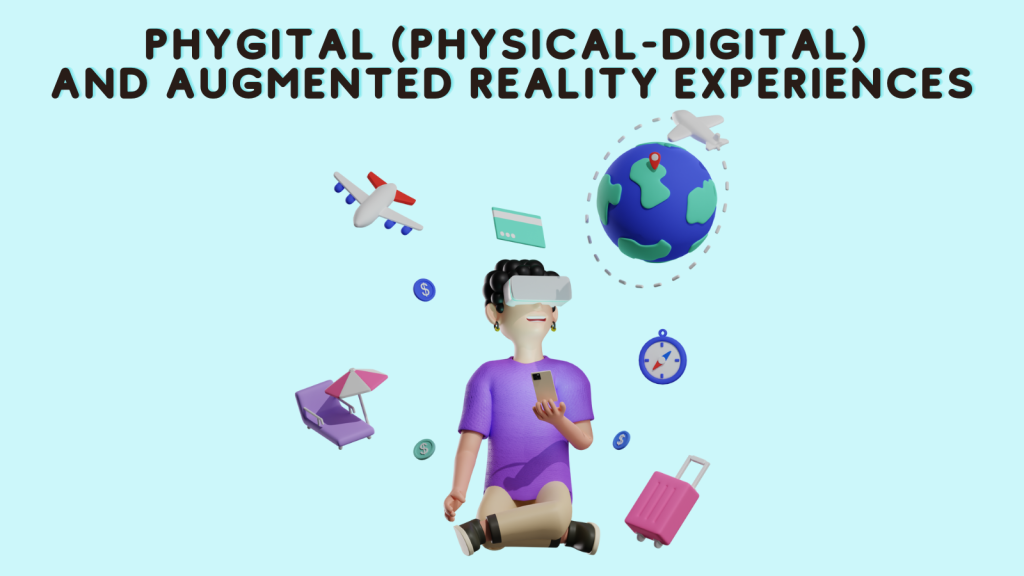
In various settings, from retail to events and exhibitions, AR elevates experiences by providing valuable information, entertainment, and engagement. The convergence of physical and digital realms through AR opens doors to dynamic and immersive brand experiences, strengthening customer relationships and driving engagement.
The integration of Augmented Reality (AR) and Virtual Reality (VR) into product marketing is a transformative trend in digital marketing:
- AR and VR enable brands to offer immersive product experiences. Customers can visualize products in real-life settings, enhancing their understanding and decision-making.
- AR apps and VR experiences allow users to engage with products virtually, leading to a deeper connection and increased trust.
- In industries like fashion and beauty, AR-powered virtual try-ons let customers "test" products, boosting confidence in their purchases.
- They are powerful storytelling tools. Marketers can create compelling narratives around products, driving emotional connections with customers.
- Brands can use VR for product training, improving employee knowledge, and customer support.
- AR and VR games tied to products can drive engagement and loyalty, creating a more playful and memorable brand experience.
- Their data analytics provide valuable insights into user behavior, helping refine marketing strategies.
As they become more accessible, they offer unique opportunities for brands to stand out, foster deeper customer relationships, and elevate their product marketing strategies.
15. Innovative Solutions for User Privacy Support
In today's digital landscape, user privacy is paramount. Innovative solutions are emerging as a key trend in digital marketing to support and enhance user privacy:
Marketers are adopting privacy-centric technologies such as differential privacy, federated learning, and blockchain to protect user data while gaining valuable insights.
Improved consent management platforms enable users to control their data more, providing clear opt-in and opt-out choices. Brands focus on delivering personalized experiences while respecting user privacy by anonymizing data and avoiding invasive tracking.
Brands collect zero-party data directly from users through surveys and feedback forms to create personalized content and offers.
Marketers are shifting towards privacy-first analytics tools, prioritizing user data protection and compliance with data privacy regulations. Regarding transparency and communication, brands openly communicate their data handling practices to build consumer trust and demonstrate their commitment to user privacy.
Staying compliant with data protection regulations like GDPR and CCPA is a top priority, ensuring brands respect user rights.
Innovations in user privacy support protect consumers and build trust, fostering stronger, long-lasting customer relationships in the digital marketing landscape.
16. YouTube Shorts: More Visible and Monetizable
With increased visibility and monetization options, YouTube Shorts is transforming digital marketing. Its short-form, engaging content caters to mobile users and encourages audience interaction. Marketers can seize opportunities to tell compelling stories, tap into trends, and boost brand visibility, making Shorts a valuable addition to their digital marketing strategies.
17. SEO and B2B Companies on TikTok
The integration of Search Engine Optimization (SEO) strategies into TikTok marketing is an emerging trend among B2B companies:
B2B brands are creating TikTok content that aligns with SEO best practices, ensuring their videos are discoverable through TikTok's search functionality.
B2B companies use TikTok to educate their audience about complex industry topics, demonstrating their expertise and authority.
TikTok's visual format allows B2B companies to tell compelling stories about their products, services, and industry insights, making them more engaging and shareable.
Brands encourage employees to participate in TikTok content creation, showcasing the human side of the business and enhancing credibility.
B2B companies leverage TikTok's popular hashtag challenges to engage the audience and increase brand visibility.
Partnering with TikTok influencers in the B2B niche helps brands reach a wider audience and build trust.
Using TikTok analytics and SEO tools, B2B companies can measure the impact of their TikTok campaigns and refine their strategies.
By combining SEO techniques with TikTok's creative platform, B2B companies can effectively reach and engage their target audience while boosting their online visibility.
In the era of social networks, authenticity is a powerful tool for building brand loyalty, enhancing reputation, and standing out in a crowded digital landscape.
Authenticity is a growing trend in digital marketing, especially in social networks.
Brands are focusing on creating authentic content that resonates with their audience. This includes sharing real stories, behind-the-scenes glimpses, and unfiltered moments.
Brands are leveraging storytelling to convey their journey, challenges, and successes. Authentic storytelling humanizes the brand and creates emotional connections.
Brands adopt a more human approach by showcasing their team, culture, and values. This builds trust and fosters stronger connections with customers.
Encouraging customers to create and share content related to the brand is a powerful way to demonstrate authenticity and engage the community.
Brands are openly communicating their practices, values, and ethical standards. Honest communication builds credibility and trust.
Timely and genuine responses to customer feedback, whether positive or negative, show that a brand values its customers' opinions.
Collaborating with influencers who genuinely align with the brand's values and products helps maintain authenticity in influencer marketing.
Brands are leveraging storytelling to convey their journey, challenges, and successes. Authentic storytelling humanizes the brand and creates emotional connections.
Active participation in online communities and forums allows brands to connect with their audience on a personal level.
For B2B companies, TikTok is a unique opportunity to humanize their brand and engage with audiences in creative, authentic ways. By combining SEO-driven content strategies with TikTok’s dynamic platform, businesses can amplify their reach, showcase expertise, and build meaningful connections. The key lies in understanding the platform’s trends and aligning them with your B2B goals—whether that’s lead generation, brand awareness, or thought leadership.
Maria Harutyunyan, CEO and Head of SEO @ Loopex Digital
18. The Surge of Intelligent and Automated Bidding in Digital Advertising
This trend is fundamentally reshaping the landscape for advertisers and marketers:
These bidding strategies are driven by data analytics and machine learning algorithms, allowing advertisers to make real-time, data-informed decisions regarding ad placements and budget allocation. This data-driven approach enables advertisers to target their campaigns with unparalleled precision, optimizing ad spending and maximizing return on investment.
Furthermore, automated bidding streamlines advertising efforts, significantly reducing the manual tasks associated with campaign management. This efficiency frees up resources and time, empowering advertisers to concentrate on developing creative and strategic aspects of their campaigns.
What sets automated bidding apart is its capacity for real-time adjustments. Advertisers can instantly tweak bidding strategies based on performance data, ensuring campaigns remain on course and responsive to changing conditions.
Personalization is another key benefit. Automated bidding leverages data to tailor ad content and placements to individual users, enhancing relevance and engagement. Additionally, these strategies promote cost savings by optimizing bids for each impression, reducing wasted ad spend, and strengthening overall campaign efficiency.
Embracing intelligent bidding offers a competitive edge in the digital advertising arena as AI-driven bidding adapts to evolving market dynamics. Furthermore, it ensures scalability, making it a valuable tool for businesses of all sizes.
As technology advances, the prevalence of intelligent and automated bidding is poised to shape the future of digital advertising, promising better results and improved ad performance.
19. Improving and Focusing on Customer Loyalty
Brands are tailoring their marketing efforts to cater to individual customer preferences, creating a sense of personalized engagement. Companies increasingly implement loyalty programs and rewards to incentivize repeat business and long-term commitment. Content marketing is shifting toward providing valuable and relevant content that resonates with loyal customers, deepening their connection with the brand.
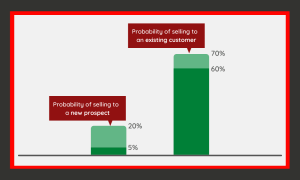
Image source: https://www.markinblog.com/
Marketers are leveraging data analytics to gain insights into customer behavior, enabling them to make informed decisions that enhance loyalty initiatives. Brands actively seek and act on customer feedback, demonstrating a commitment to meeting customer needs and expectations. Providing a consistent and seamless experience across all digital channels is crucial for retaining loyal customers.
Companies strive to establish emotional connections with customers, creating advocates who promote and support the brand. Putting the customer at the center of all marketing efforts is fundamental to fostering loyalty.
By focusing on customer loyalty, brands retain valuable customers, benefit from word-of-mouth referrals, and increase customer lifetime value. This trend underscores the importance of building lasting relationships in the digital age.

